The Performance of a Passive Autoranging Method for a Photonic Current Transducer
Abstract
:1. Introduction
2. Materials and Methods
3. Results
3.1. Performance Requirements
3.2. Experimental Setup
3.3. Initial Tests
4. The Conceptual Design of the Switching Algorithm
4.1. The General Requirements of the Switching Algorithm
4.2. The Initial Design of the Switching Algorithm
4.3. Testing the Switching Algorithm with the LVT Connected
5. Discussion
6. Conclusions
Author Contributions
Funding
Institutional Review Board Statement
Informed Consent Statement
Data Availability Statement
Acknowledgments
Conflicts of Interest
References
- Chen, G.; Xu, Q.; Song, X.; Zhang, D.; Li, B.; Xie, L. The explosion characteristics of the insulating oil under unconfined conditions and its damage assessment. Case Stud. Therm. Eng. 2023, 52, 103777. [Google Scholar] [CrossRef]
- El-Harbawi, M.; Al-Mubaddel, F. Risk of Fire and Explosion in Electrical Substations due to the Formation of Flammable Mixtures. Sci. Rep. 2020, 10, 6295. [Google Scholar] [CrossRef]
- Thomas, R.; Vujanic, A.; Xu, D.Z.; Sjodin, J.E.; Salazar, H.R.; Yang, M.; Powers, N. Non-conventional instrument transformers enabling digital substations for future grid. In Proceedings of the IEEE/PES Transmission and Distribution Conference and Exposition (T&D), Dallas, TX, USA, 3–5 May 2016. [Google Scholar] [CrossRef]
- Močnik, J.; Humar, J.; Žemva, A. A non-conventional instrument transformer. Meas. J. Int. Meas. Confed. 2013, 46, 4114–4120. [Google Scholar] [CrossRef]
- Silva, R.M.; Martins, H.; Nascimento, I.; Baptista, J.M.; Ribeiro, A.L.; Santos, J.L.; Jorge, P.; Frazão, O. Optical Current Sensors for High Power Systems: A Review. Appl. Sci. 2012, 2, 602–628. [Google Scholar] [CrossRef]
- Orr, P.; Fusiek, G.; Niewczas, P.; Booth, C.D.; Dyśko, A.; Kawano, F.; Nishida, T.; Beaumont, P. Distributed Photonic Instrumentation for Power System Protection and Control. IEEE Trans. Instrum. Meas. 2015, 64, 19–26. [Google Scholar] [CrossRef]
- Nelson, J.; Fusiek, G.; Clayburn, L.; Niewczas, P.; Booth, C.; Orr, P.; Gordon, N. Development and testing of optically-interrogated current sensors. In Proceedings of the 2016 IEEE International Workshop on Applied Measurements for Power Systems (AMPS), Aachen, Germany, 28–30 September 2016; IEEE: New York, NY, USA, 2016; pp. 1–5. [Google Scholar] [CrossRef]
- Fusiek, G.; Nelson, J.; Niewczas, P.; Havunen, J.; Suomalainen, E.P.; Hällström, J. Optical voltage sensor for MV networks. In Proceedings of the 2017 IEEE SENSORS, Glasgow, UK, 29 October–1 November 2017; pp. 1–3. [Google Scholar] [CrossRef]
- Fusiek, G.; Niewczas, P.; Gordon, N.; Orr, P.; Clarkson, P. 132 kV optical voltage sensor for wide area monitoring, protection and control applications. In Proceedings of the 2020 IEEE International Instrumentation and Measurement Technology Conference (I2MTC), Dubrovnik, Croatia, 25–28 May 2020; pp. 1–5. [Google Scholar] [CrossRef]
- Fusiek, G.; Niewczas, P. Photonic Voltage Transducer with Lightning Impulse Protection for Distributed Monitoring of MV Networks. Sensors 2020, 20, 4830. [Google Scholar] [CrossRef] [PubMed]
- Bohnert, K.; Gabus, P.; Kostovic, J.; Brändle, H. Optical fiber sensors for the electric power industry. Opt. Lasers Eng. 2005, 43, 511–526. [Google Scholar] [CrossRef]
- Bi, L.; Li, H. An Overview of Optical Voltage Sensor. In Proceedings of the 2012 International Conference on Computer Science and Electronics Engineering, Hangzhou, China, 23–25 March 2012; Volume 3, pp. 197–201. [Google Scholar] [CrossRef]
- IEC 61869-10:2017; Instrument Transformers–Part 10: Additional Requirements for Low-Power Passive Current Transformers. International Electrotechnical Commission: Geneva, Switzerland, 2017.
- Xu, D.; Sae-Kok, W.; Vujanic, A.; Motta, A.; Powers, N.; Neo, T. Fiber-optic Current Sensor (FOCS): Fully Digital Non-conventional Instrument Transformer. In Proceedings of the 2019 IEEE PES GTD Grand International Conference and Exposition Asia (GTD Asia), Bangkok, Thailand, 19–23 March 2019; pp. 982–987. [Google Scholar] [CrossRef]
- Mir, B.; Niewczas, P.; Fusiek, G. Design and Implementation of a Passive Autoranging Circuit for Hybrid FBG-PZT Photonic Current Transducer. Sensors 2023, 23, 551. [Google Scholar] [CrossRef] [PubMed]
- PI. Physik Instrumente Ltd. Available online: https://www.piceramic.com/en/products/piezoceramic-actuators/linear-actuators/p-882-p-888-picma-stack-multilayer-piezo-actuators-100810#specification (accessed on 10 May 2024).
- Pico Technology. TA167 AC/DC Current Probe User’s Guide. Available online: https://www.picotech.com/download/manuals/ta167-2000a-current-clamp-users-guide.pdf (accessed on 20 February 2024).
- Vishay Intertechnology, Inc. Shunts, Current Shunts and Current-Sensing Resistors. Available online: https://www.vishay.com/docs/49159/_power-metal-strip-shunts-current-shunts_pl0005-1801.pdf (accessed on 10 May 2024).
- Amiel, I.; Danin, Z.; Sitbon, M.; Averbukh, M. Voltage RMS Estimation during a Fraction of the AC Period. Sensors 2022, 22, 6892. [Google Scholar] [CrossRef] [PubMed]
- Lente, M.H.; Eiras, J.A. Interrelationship between self-heating and ferroelectric properties in PZT ceramics during polarization reorientation. J. Phys. Condens. Matter 2000, 12, 5939. [Google Scholar] [CrossRef]
- Wu, K.; Schulze, W.A. Aging of the Weak-Field Dielectric Response in Fine- and Coarse-Grain Ceramic BaTiO3. J. Am. Ceram. Soc. 1992, 75, 3390–3395. [Google Scholar] [CrossRef]
- Madhu Babu, V.; Paul Praveen, J.; Das, D. Synthesis and aging behaviour study of lead-free piezoelectric BCZT ceramics. Chem. Phys. Lett. 2021, 772, 138560. [Google Scholar] [CrossRef]
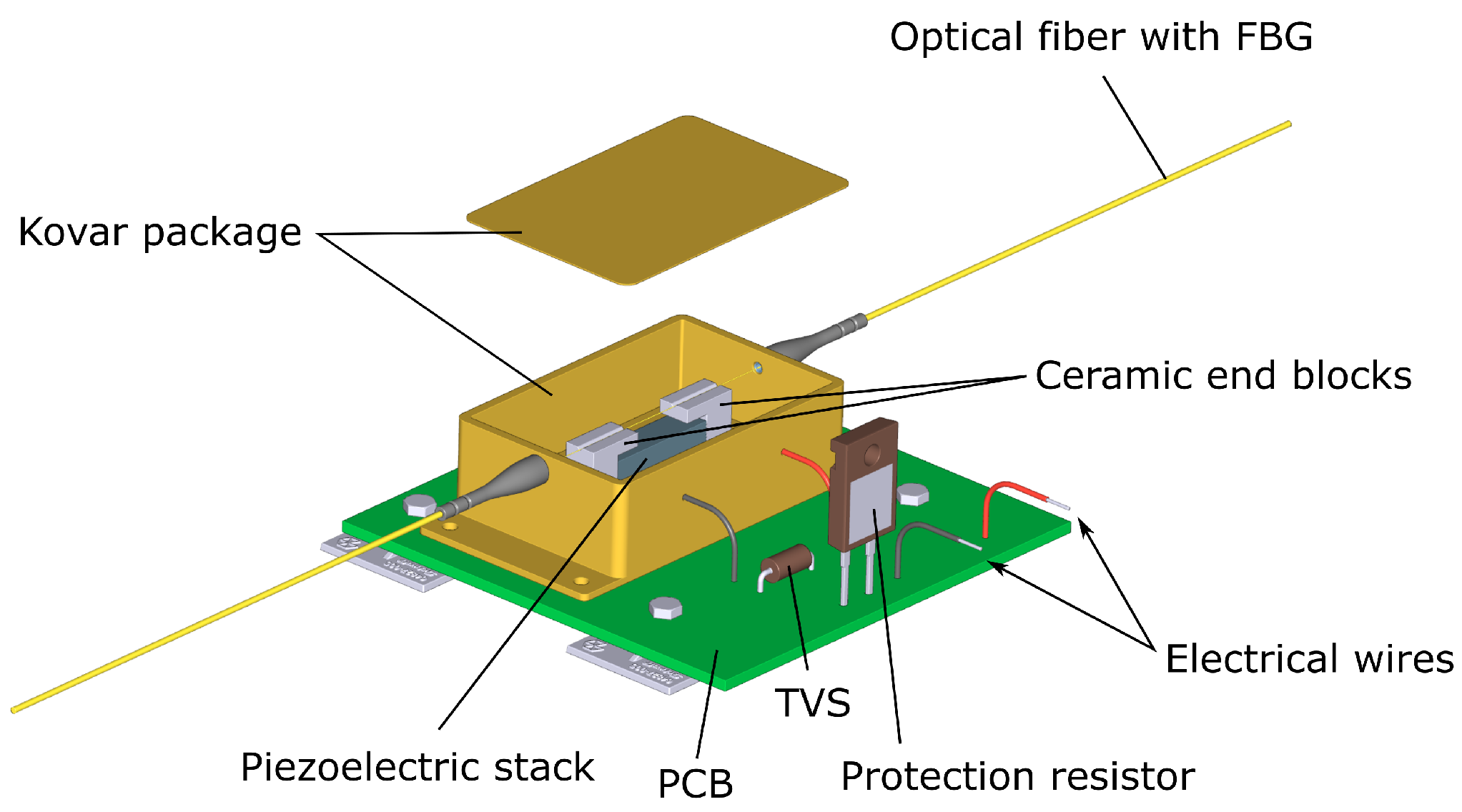
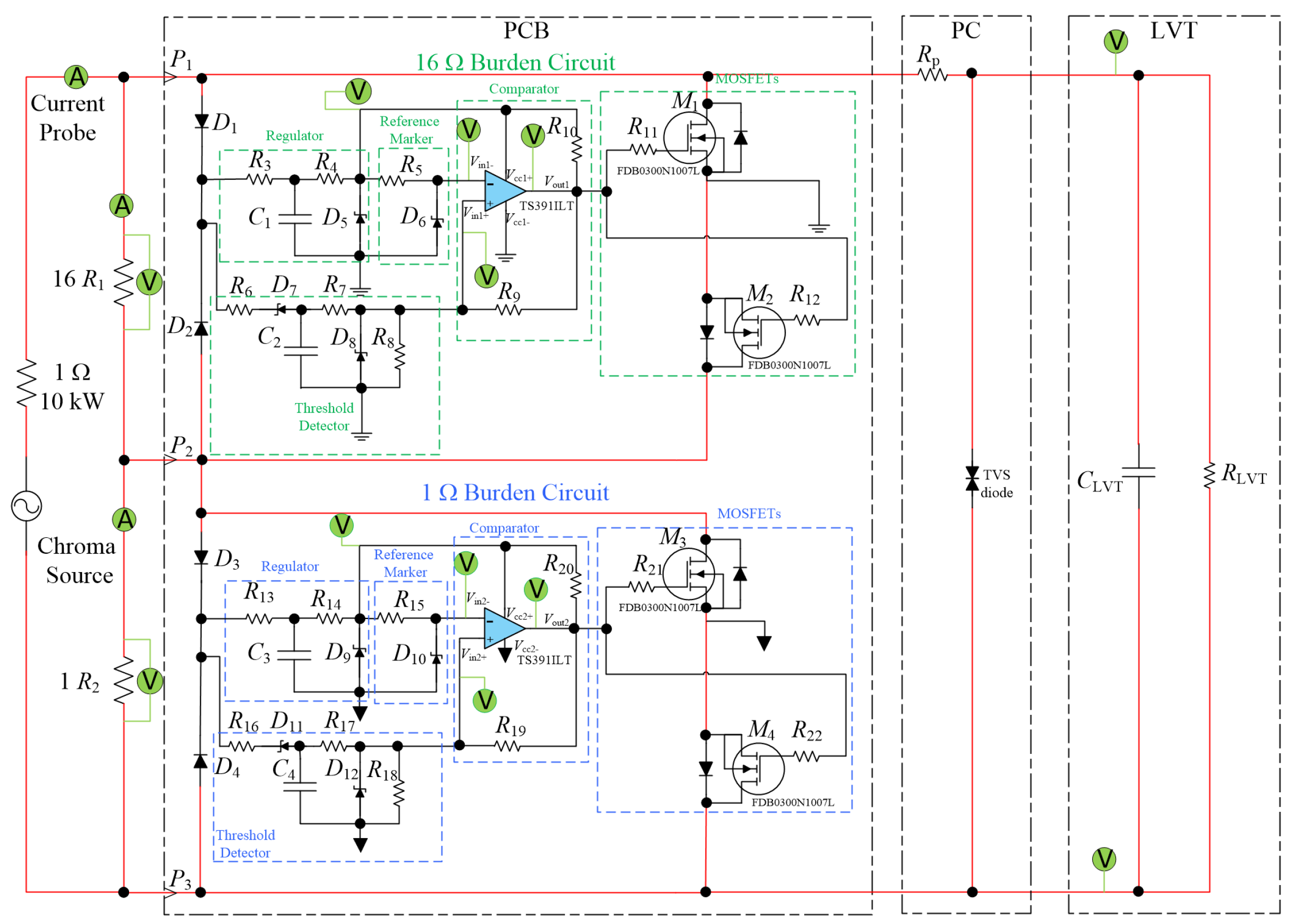
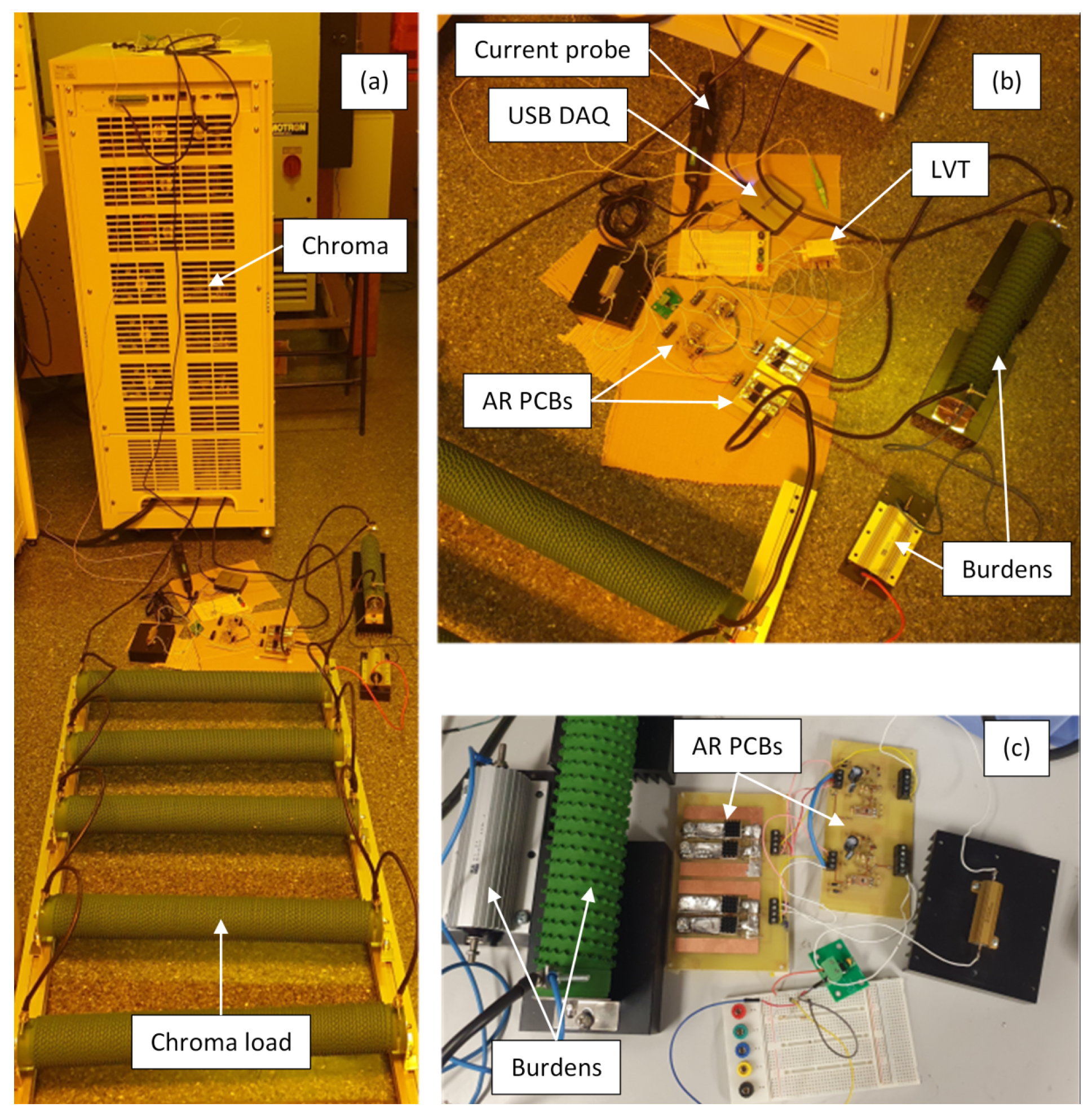


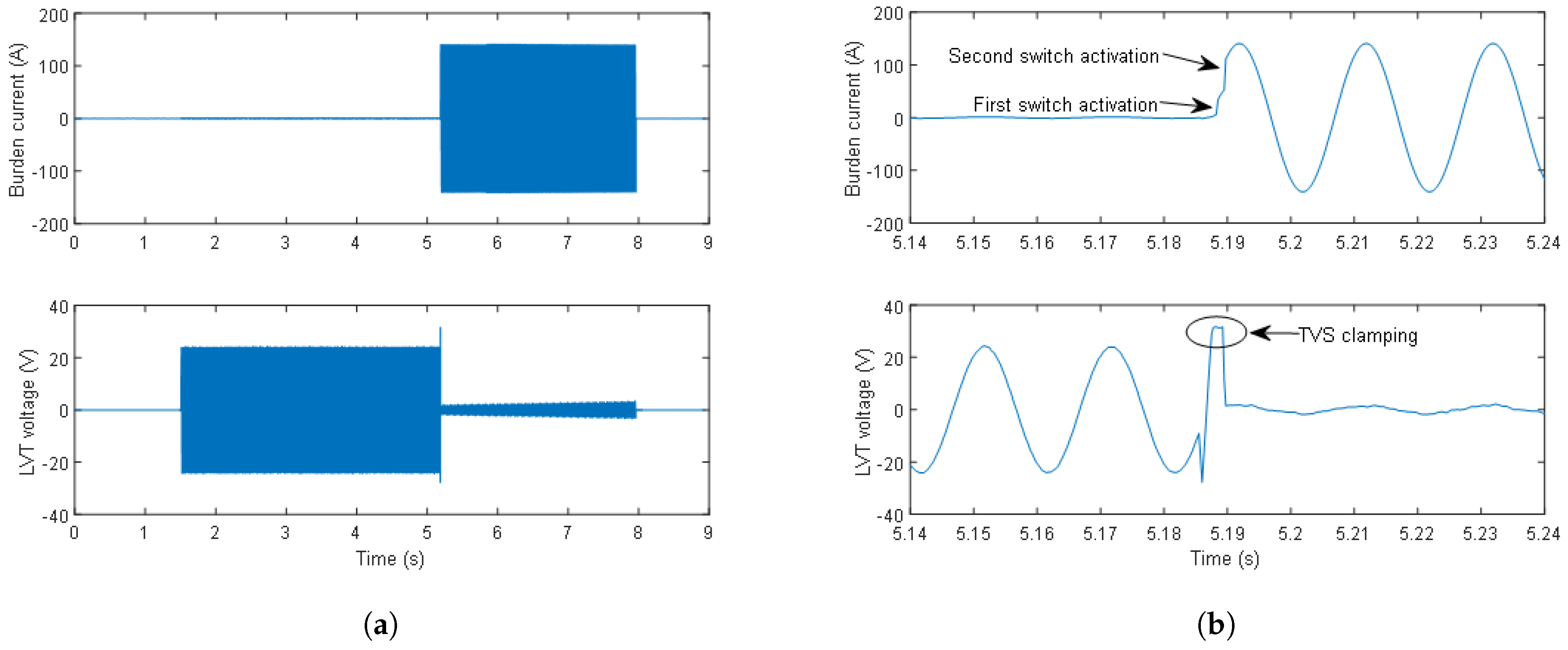

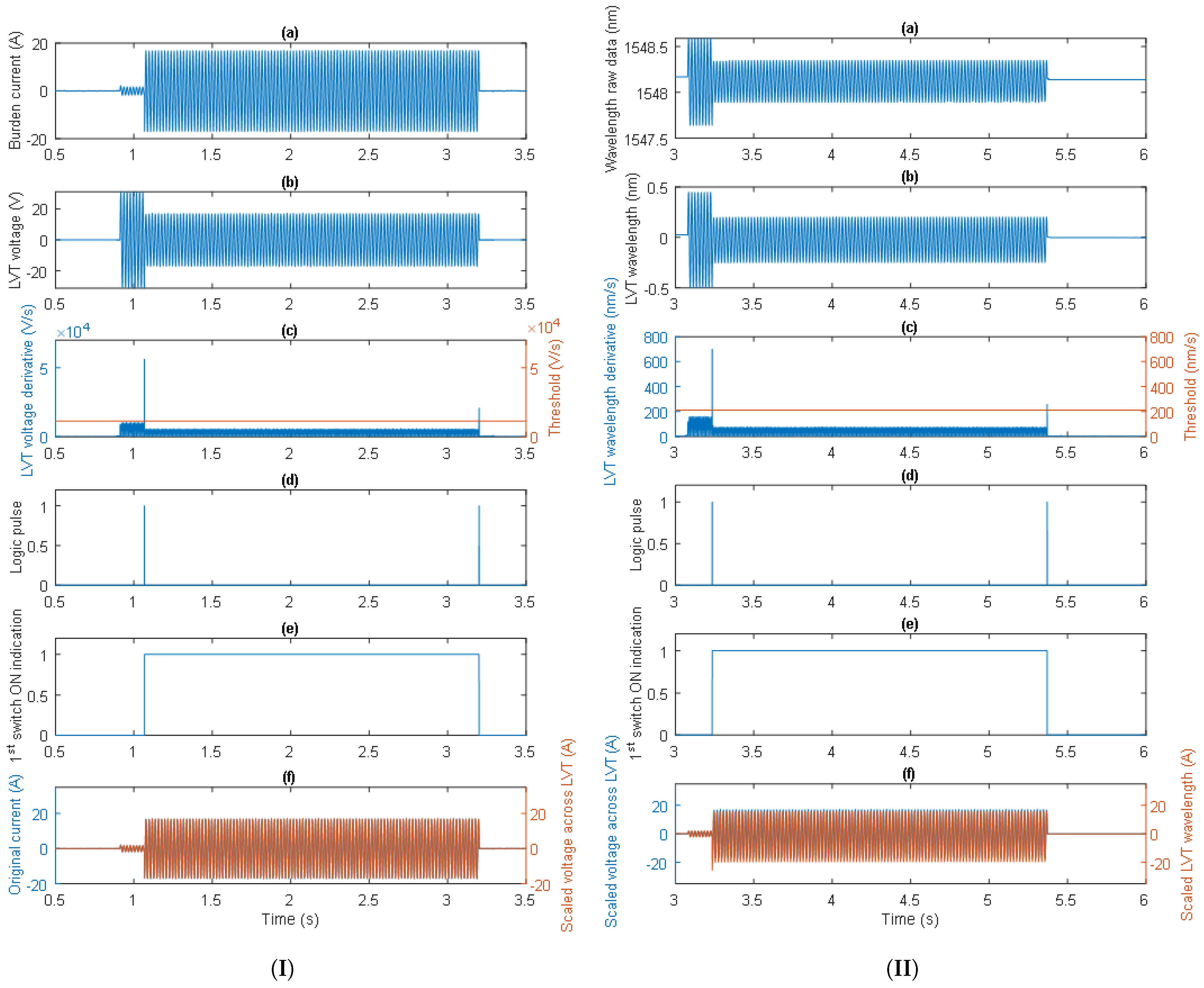
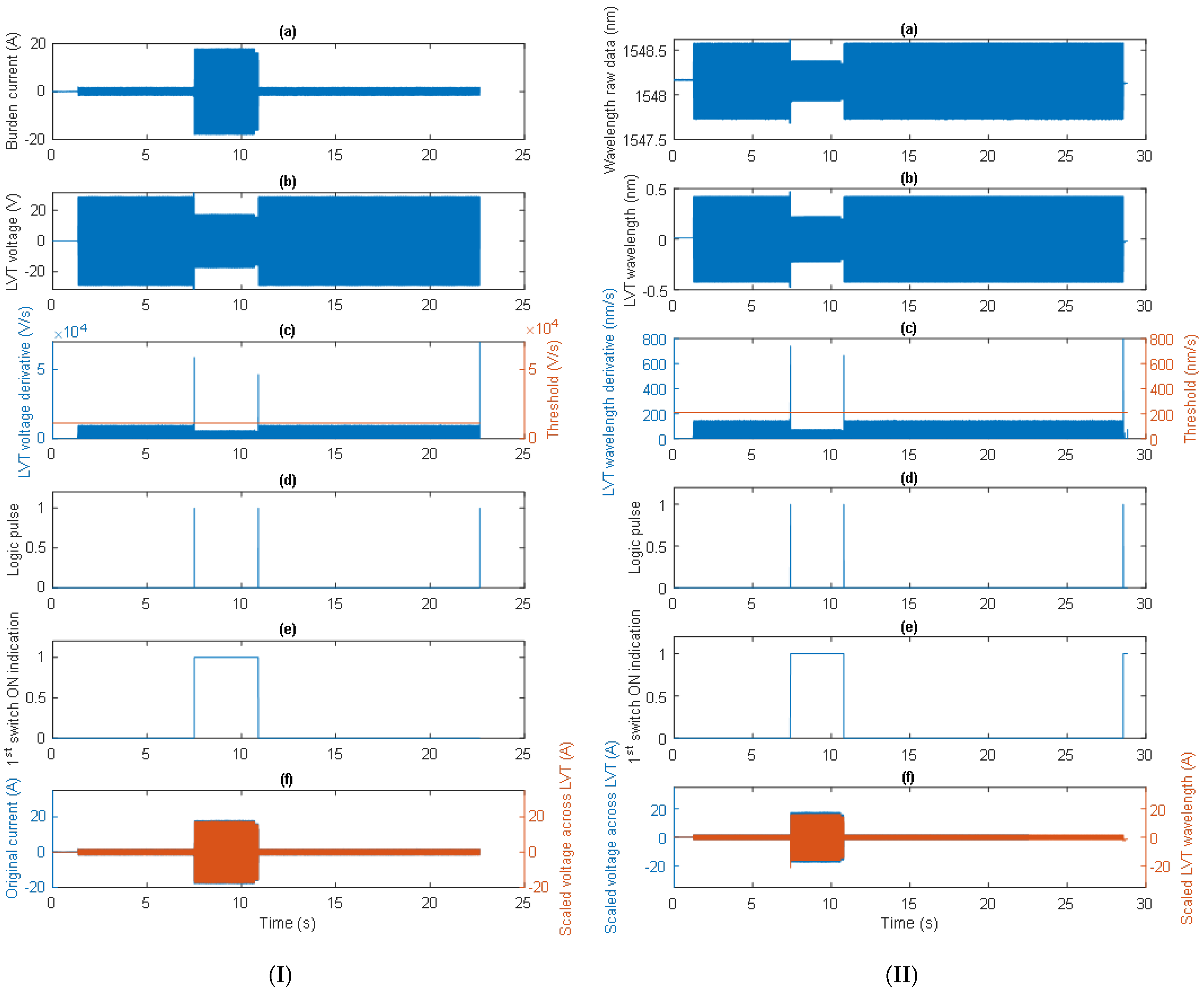
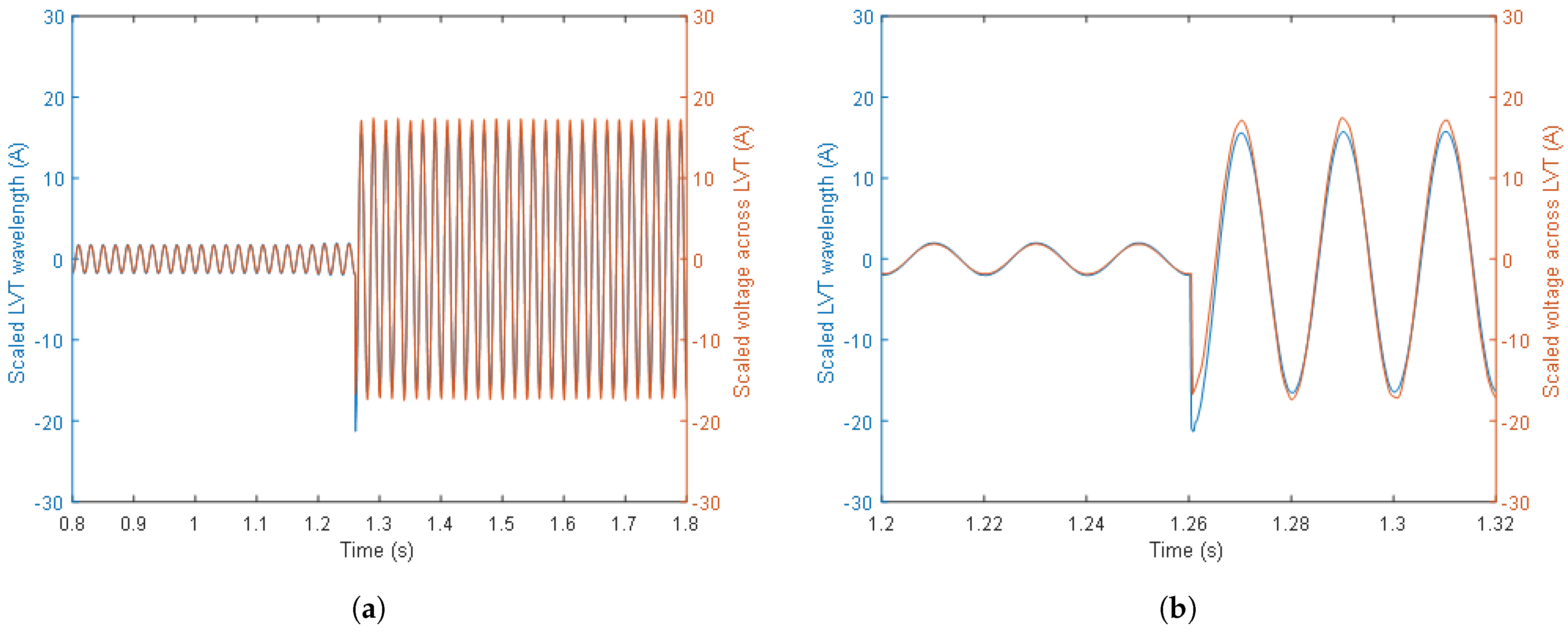
| LVT Specifications | |
|---|---|
| Rated voltage (V) | 17 |
| Maximum voltage (Vpk) | 32 |
| Sensitivity to voltage (pm/V) | 14 |
| Capacitance (µF) | 1.5 |
| Resistance (MΩ) | 200 |
| Resonant frequency (kHz) | 70 |
| CT secondary current specifications | |
| Rated current (A) | 1 |
| Accuracy limit factor (ALF) | 20 |
| Maximum thermal current (A) | 100 |
| Maximum thermal current duration (s) | 1 |
| Aimed accuracy class | |
| Protection | 5P20 |
| Metering | 0,2 |
| Special application | 0,2S |
| Autoranging circuit specifications | |
| Number of switching stages and burdens | 2 |
| Maximum reaction time to fault current (ms) | 4 |
| Minimum switched ON state duration (s) | 1 |
Disclaimer/Publisher’s Note: The statements, opinions and data contained in all publications are solely those of the individual author(s) and contributor(s) and not of MDPI and/or the editor(s). MDPI and/or the editor(s) disclaim responsibility for any injury to people or property resulting from any ideas, methods, instructions or products referred to in the content. |
© 2024 by the authors. Licensee MDPI, Basel, Switzerland. This article is an open access article distributed under the terms and conditions of the Creative Commons Attribution (CC BY) license (https://creativecommons.org/licenses/by/4.0/).
Share and Cite
Fusiek, G.; Mir, B.; Niewczas, P. The Performance of a Passive Autoranging Method for a Photonic Current Transducer. Sensors 2024, 24, 3183. https://doi.org/10.3390/s24103183
Fusiek G, Mir B, Niewczas P. The Performance of a Passive Autoranging Method for a Photonic Current Transducer. Sensors. 2024; 24(10):3183. https://doi.org/10.3390/s24103183
Chicago/Turabian StyleFusiek, Grzegorz, Burhan Mir, and Pawel Niewczas. 2024. "The Performance of a Passive Autoranging Method for a Photonic Current Transducer" Sensors 24, no. 10: 3183. https://doi.org/10.3390/s24103183





